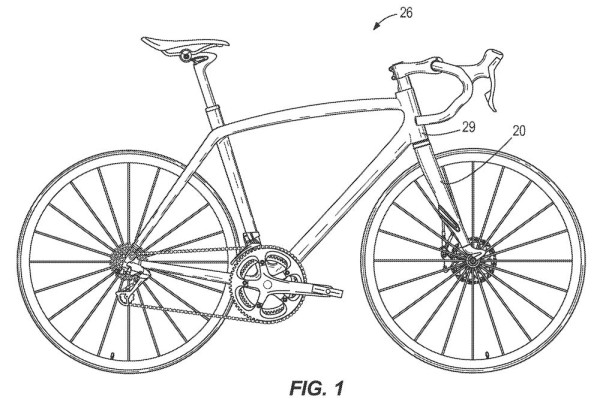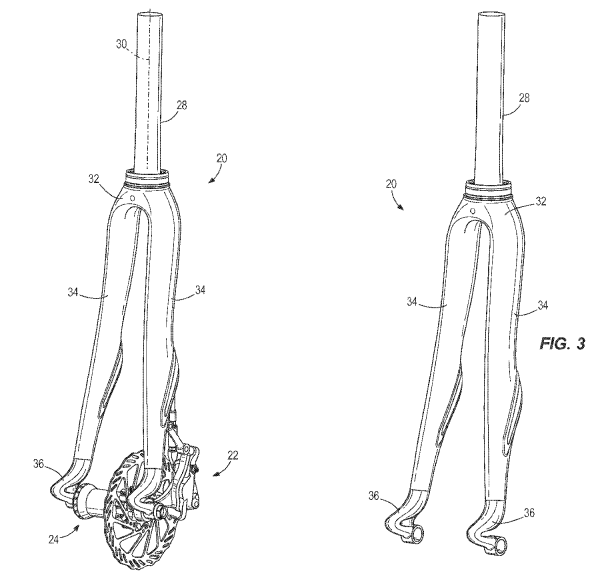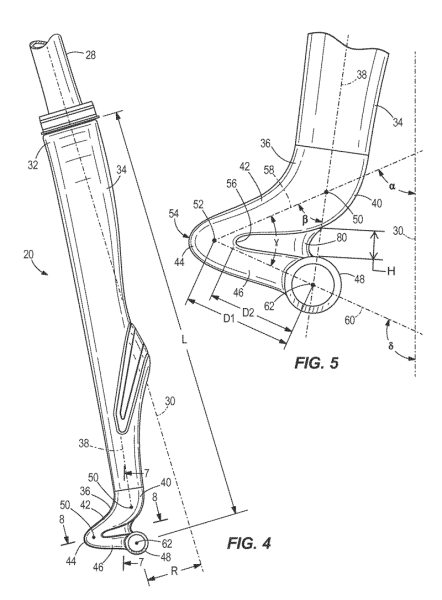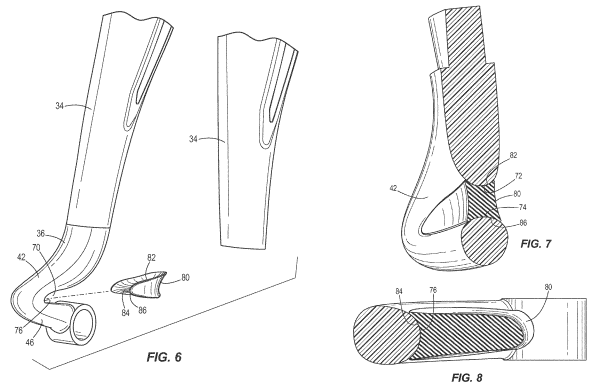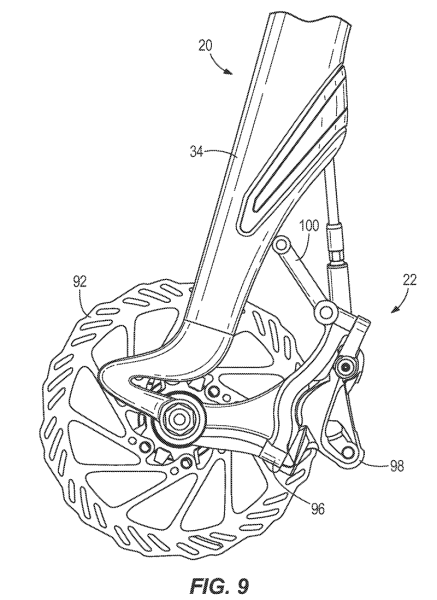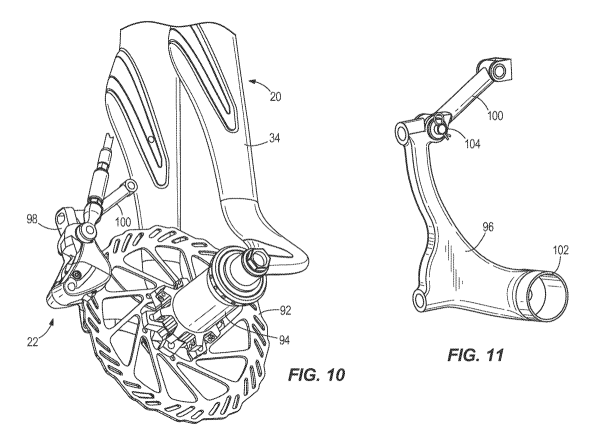After introducing the COBL GOBL-R (now simply referred to CG-R) micro-suspension seatpost on their 2013 Roubaix, Specialized could be testing the concept on their forks, too.
Simply called a “bicycle fork with compliant tip” in the patent filings, the visual and design similarities are tremendous. Which is good, as it’ll lend a cohesive look should this feature end up on a Roubaix, Crux or Diverge in the future. Like the CG-R, it uses a “resilient member” between two supporting arms, allowing the arms to flex under controlled conditions.
Intrigued? The suspension is only the half of it, wait’ll you see how they accommodate the front disc brake caliper…
Specialized’s patent mentions road bikes in particular, not cyclocross, but we’re thinking this design has applications beyond chip-sealed pavement. And with Cannondale testing a short travel Lefty on pro’s ‘cross bikes and Lauf developing a shorter travel leaf spring gravel bike fork, the concept isn’t as far fetched as it may seem. Here’s the technical summary:
“The fork tip includes a first arm extending at an angle of 20-100 degrees (preferably 40-85 degrees, and more preferably 66 degrees) relative to the steering axis, a second arm extending at an angle of 50-140 degrees (preferably 70-120 degrees, and more preferably 114 degrees) relative to the steering axis, and an axle support coupled between the second arm and the front wheel. In one embodiment, the first arm and second arm define a gap, and the fork tip further includes a resilient member positioned in the gap.”
A provisional patent for this idea was filed in early 2013 with a followup in February 2014, and it was published in September 2014. It’s shown as invented by Christopher P. D’Aluisio, who’s also worked on patents for their aerodynamic frame shaping, adjustable stems and the internal storage options on the Shiv.
The two centers of the pivot points are referenced by (50) and (52). The patent allows for a range angles but does get pretty specific with ideals in relation to the steering axis.
The patent also specifies the shaping of the open space between the two arms, calling for a concave and convex shapes in which to nest the polyurethane elastomer spring. It could be held in place mechanically, by adhesive or simply by a secure fit, and it could even be user replaceable to either replace a damaged piece or change the stiffness of the spring.
The patent says that in the ideal configuration, the design would provide between 2mm and 4mm of axle travel. Not much, but certainly enough to take the edge off and improve traction.
Seeing as the front wheel will be moving in space relative to the fork’s crown, rim brakes are out. But disc brakes need a caliper, and that caliper must be affixed to the bottom of the fork such that it moves in sync with the rotor. In order to make that happen…
…a small link (100) is used to support the top of the brake mount and keep it moving in the proper arc. (That other thing you’re seeing jutting up is the brake hose, not a secondary link or miniature shock)
One end of the link could have an easily detachable design (104), which is noted as a way to make the caliper removable with the wheel, but we don’t honestly see that being very practical unless there’s a quick disconnect brake hose and the entire caliper mount (96) comes off with the wheel.
It’s pretty evident what the goals are: damping vibration and small bumps to improve traction. But the design begs the question of how it’ll maintain equal travel on both sides. A thru axle is obvious, but will a 12mm or 15mm thru axle be enough to maintain parallel movement under off-camber and cornering loads? Time will tell, but based on the following comment, it could be sooner than later before we get to bounce one around.
We reached out to Specialized for comment and were told: “…at Specialized we are always looking for ways to enhance the rider’s experience and are pushing innovation and technology to do so. This is a technology we use in our seat post and are always looking at ways to apply it’s use in different areas. We believe the rider’s the boss and want to provide them with the bikes and equipment needed to optimize each experience.” (Big thanks to Katie Sue, Spec’s PR manager, for the quick reply!)
